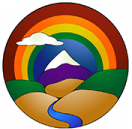I am in Pain and I am Not Suffering: A Contemplation on the Two Arrows
The Buddha said, “When touched by a feeling of pain, the ordinary uninstructed person sorrows, grieves, and laments, beats his breast, becomes distraught. So he feels two pains, physical and mental, just as if he was shot with an arrow and, right afterward, was shot with another one, so that he felt pains of two arrows.”
In my life, I have made the very human mistake of following the arrow of pain with the arrow of suffering. The first arrow, the sensation of pain, is bad enough. But its second arrow–the story we tell ourselves about our pain—that’s the real trouble.
Joan Halifax in her book Being with Dying, shares not only her own journey with illness and pain but also her journey as a caregiver. All of us, by the nature of being human, have experienced personal pain and the pain of those around us. I, too, as I bear witness to this dying process that I have with terminal cancer am still noticing the fluctuating degree of physical pain and the accompanying mind formations that are reactive, the stories if you will. “Wow! This pain is excruciating today! I wish I could get more of a break from it. This is as bad as it was last week. Aren’t these pain medications supposed to work better than this? It’s probably going to just get worse. After all, I am dying! Oh Pat, all these stories!
If you aren’t used to pain, even the smallest pain can feel overwhelming. A throbbing toothache can take over your life. A fractured bone traps your mind in its itching and aching. Even the prick of a needle can fill us with anxiety and dread. This is understandable—our entire culture looks upon pain as an enemy, and teaches us to do anything, anything to get away from it. We’re wrapped up in trying to evade pain, sometimes through numbing out with addiction, sometimes through an unwholesome obsession with avoiding pain altogether.
But most of us won’t be able to avoid pain forever. At some point in our lives, perhaps when we are dying, there may be great pain—and actually, even though you don’t want to hear this, pain can be a teacher, once we stop frantically fleeing its presence. We need to know what to do with pain: how to see it, how to work with it. And it really helps if we can use our experiences of pain right now to prepare us for what’s ahead.
Liberation comes when we realize that the first arrow doesn’t necessarily have to be followed by the second. Can you make the distinction between sensation of pain and the story that surrounds it? Try saying to yourself, the next time you feel pain, “I am in pain, but I am not suffering.” See if it helps to remind you not to amplify the pain by building a story around it.
